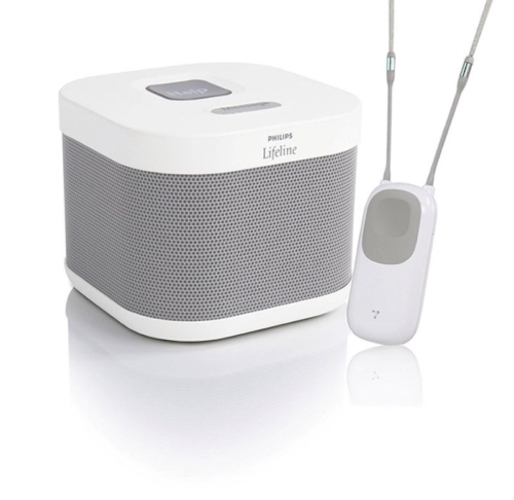For those who are long-distance caregivers, worrying about if a parent might take a fall or have other health issues without them knowing is a major concern. Lifeline is a medical alert system available in 50 states. I spoke with Lifeline Representative, Joy Balsamo to find out more about how, exactly, this system works.
How does Lifeline work?
People wear their personal help button on their neck or wrist which dials out their phone to the response center in Framingham, Mass. When the person pushes the button, a personal response associate takes the call; they are literally sitting in a cubicle waiting for the calls to come through. When the subscriber sends in a signal for help, on the computer is the profile of the client calling in front of them. This contains information from their address, information of the local response team, names of family members and neighbors, native language, even down to if the person has a dog that bites or where an extra key might be hidden.
How does the person wearing the alert button know what’s going on after they’ve called for help?
They will come over the communicator, which is typically in the bedroom. The person talks into the air, “I fell, I’m having chest pain,” and an associate determines what level of help is needed. They may ask “Call my daughter,” or “Call an ambulance.” The person will then call the local emergency responder, and they’ll be on their way.
Listen to a samples of real calls made here.
How do the responders know when help has arrived?
We have what is called a closed loop system; we check back in to make sure that help has arrived or once emergency help or responder checks in at the house they alert us and we know, absolutely, that help has gotten there. After we’ll also contact people like their case manager to say that that “‘Mary Jones’ had a fall on she’s on her way to St. Francis Hospital.” we’ll stay on the line if the person asks and keep checking back in.
How does Lifeline contribute to home health care?
It helps to keep people at home just a little bit longer. The average subscriber is an 82-year-old female who lives alone and needs help with one or two [Activities of Daily Living] ADLs. Lifeline is a nice complement to home health aides or nursing staff that may be going in to help a patient. If someone lives by themselves, the family as well as the subscriber has peace of mind that if they need help they will be able to get it and they will be contacted.
How many people are using Lifeline?
There are 718, 672 subscribers as of today. It is available in all 50 states, including Alaska, Hawaii, and Puerto Rico.
How much does it cost?
After the activation fee there is a monthly fee for subscribers. It varies depending part of the country you’re in, but it is safe to say that it costs just a little more than a dollar a day.
When was this created?
Lifeline came out first in 1974. When they first came out they were about the size of a garage door opener, that [subscribers] would clip to their belt! It was invented by Dr. Andrew Dibner. He was shaving for work, and cut himself while getting ready. Then he stopped to ask himself, “If I did this and no one was home how would I get help?” And that’s when he got the idea.

